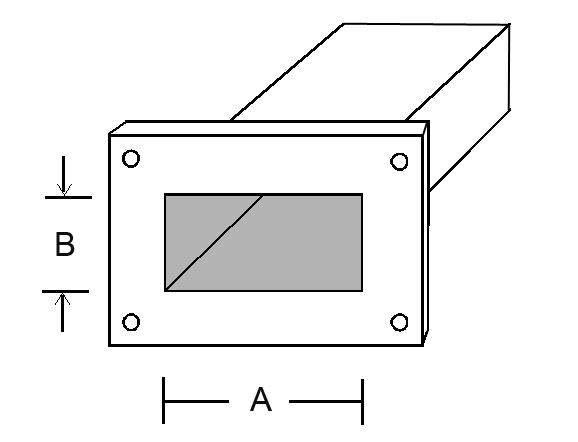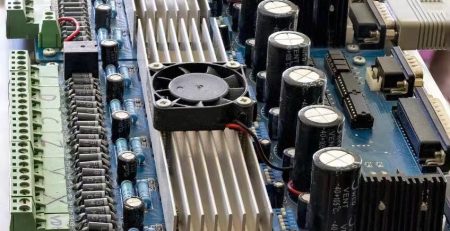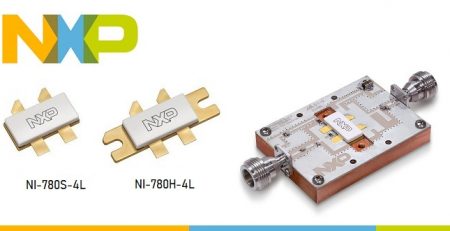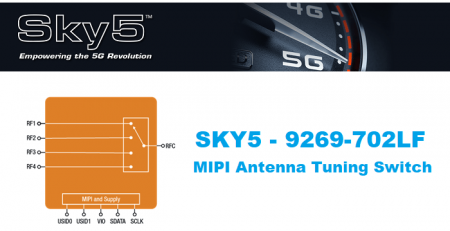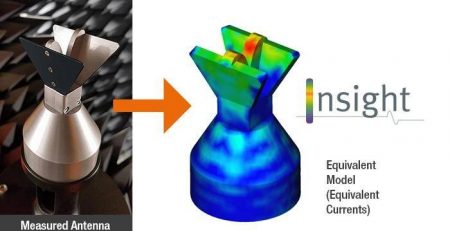How to design a dual polarization antenna
Quad-ridged Horn Antenna Design by RFecho
Abstract
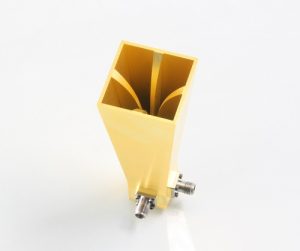
RFecho Quad-ridge horn antennas (QRHA) of various geometries
are considered as possible candidates for a wideband reflector
antenna feed. It is demonstrated that shaping the sidewalls of the
ridge horns significantly improves the radiation characteristics of
the horns. The conical quad-ridge horn with an elliptically shaped
sidewall shows the most promise as a wideband reflector antenna
feed. The radiation patterns are rotationally symmetric, and the
10-dB beamwidth is reasonably constant over a wide frequency
range.
Keywords: Broadband horn antenna, quad-ridge horn,
dual polarization, offset feed coax-to-waveguide
transition.radio astronomy, reflector antenna, wideband, millimeter
wave antenna , QRHA, UWB, RFecho.com
I. INTRODUCTION
A Quad-ridge Horn Antenna (QRHA) having a wide
bandwidth and dual polarization is a preferred feed
element for a parabolic dish. All waveguide feed horn
antennas have the advantage that they act like high pass
filters, this is an important factor for radio astronomy
applications as any noise below the lowest cut-off
frequency is ideally rejected. These stable pattern characteristics
make these horns ideal candidates as feeds for large astronomy
reflector antennas. A direct transition from quad-ridge waveguide to free space employing a quad-ridge horn results in an
antenna with a much wider VSWR bandwidth.
II.RFecho.com ANTENNA GEOMETRIES
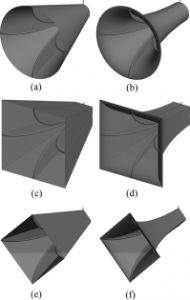
The antenna geometries considered are shown in Fig. 2.
Conical horns (without ridges) have good pattern symmetry
and cross-polar performance . A conical quad-ridge horn antenna utilizing a lens to improve the radiation patterns and hence the aperture efficiency was proposed as a reflector feed in .
A ridge-loaded pyramidal horn antenna has an aperture field that tapers along the -plane with phase errors over both the E and H-planes similar to a conventional horn antenna. Thus, the
E-plane patterns tend to have different beamwidths and higher
sidelobe levels than the H-plane patterns . Pyramidal quadridge horns also have large variation in beamwidth as a function of frequency.
Efforts to improve the radiation pattern of pyramidal quadridge horn antennas included resistive inserts to reduce sidelobe levels —this is not an option for radio astronomy applications where conductive losses increase system noise.
Diagonal horns (without ridges) have equal beamwidths and suppressed sidelobes as well as nearly equal E – and H-plane patterns. Diagonal quad-ridge (as well as square and
round) waveguides have been investigated in the past to determine characteristics such as cutoff frequencies, attenuation, impedance, and field distributions . Diagonal quad-ridge
orthomode transducers (OMTs) have been investigated and provided adequate performance over standard waveguide bands.
The sidewalls of the conventional ridge horns mentioned are
shaped elliptically in an effort to improve on pattern symmetry
and constant beamwidth behavior. The ridges are also shaped
elliptically and are chamfered to obtain an impedance of 50 .
III.RFecho.com ANTENNA DESIGN
There are many forms of ridged waveguide. For the dualpolarized horn antenna, the quad-ridged waveguide is mainly used to feed the horn antenna with two ports.
The design of the horn antenna is divided into three parts: the matching block, the ridge
structure and the waveguide and horn part.
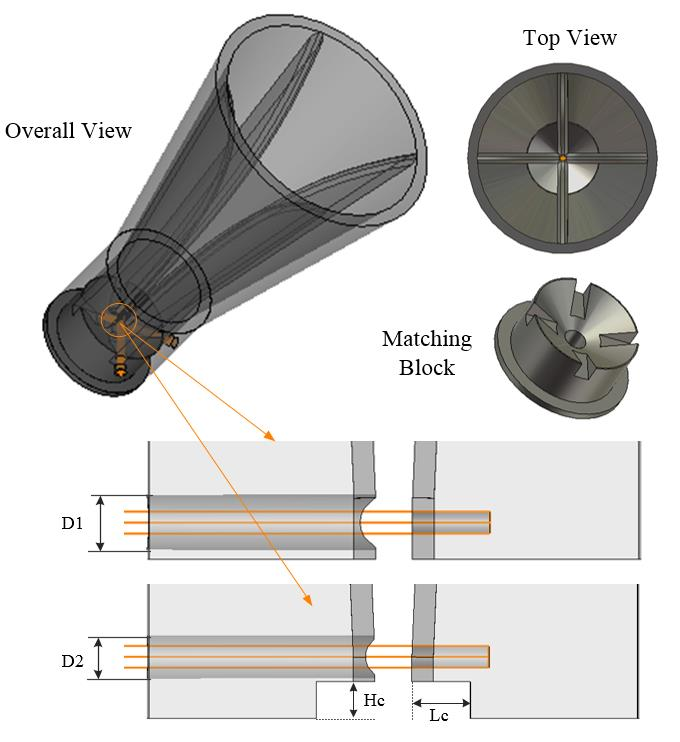
A. Matching Block
When the signal is input from port-1 and port-2, mutually
orthogonal TE11 modules are excited through the probe. Part
of the energy is propagated towards the horn aperture
direction, and the other part is transmitted to the back
reflection cavity through the short circuit board, which is
reflected back and propagated to the horn aperture with the
stack of excitation wave. The function of the matching block
is to filter the high mode TE21 mode excited in the circular
waveguide and to expand the single-mode working
bandwidth of the horn antenna.
B. The Ridge Structure
Antenna using 50 ohm coaxial feed at the center of the
ridge waveguide. The outer conductor of coaxial is in contact
with the outer wall of the waveguide, and the probe passes
through the ridge structure to form a monopole radiator
inside the ridge waveguide.
The antenna ridge structure guides the electromagnetic
field in the ridge waveguide and is one of the important
factors affecting the antenna performance.
In order to ensure the impedance at the feed point (50 Ω) can gently transition
to the impedance of the free space of the horn (377 Ω), the
ridge structure is generally designed according to the
exponential form . For a quad-ridged waveguides, the
characteristics of the main mode are not determined by the
waveguide size, but by the ridge spacing and ridge thickness.
In order to enable the four ridges to be orthogonally
assembled, the ridge structure can be chamfered while the
ridge spacing and thickness is ensured, as shown in Fig. 3.
C. Waveguide and Horn
As with the general horn antenna, the radiation pattern of
the quad-ridged cone horn antenna is determined by the
length of the horn and the radius of the horn aperture in the
case of a small change in the size of the waveguide structure.
The length of the horn should be longer than half of the
wavelength of lowest operating frequency. This ensures that
the higher order mode is not excited during the impedance
transformation. The radius of the horn aperture is determined
by the gain requirement of the antenna and the phase
difference of the aperture plane.
IV. CONCLUSION
Various shapes of quad-ridge horn antennas were investigated . Conventional quad-ridge horn antennas with conical,
pyramidal, and diagonal sidewalls were considered. It was
demonstrated that shaping the sidewall significantly improves
the radiation characteristics of the conical and pyramidal
quad-ridge horns. The conical quad-ridge horn with elliptically shaped sidewalls . The radiation
patterns are rotationally symmetric, and the 10-dB beamwidth
reasonably constant, over a wide frequency range.
Contact with RFecho to get more solutions of quad-ridged horn antennas.


